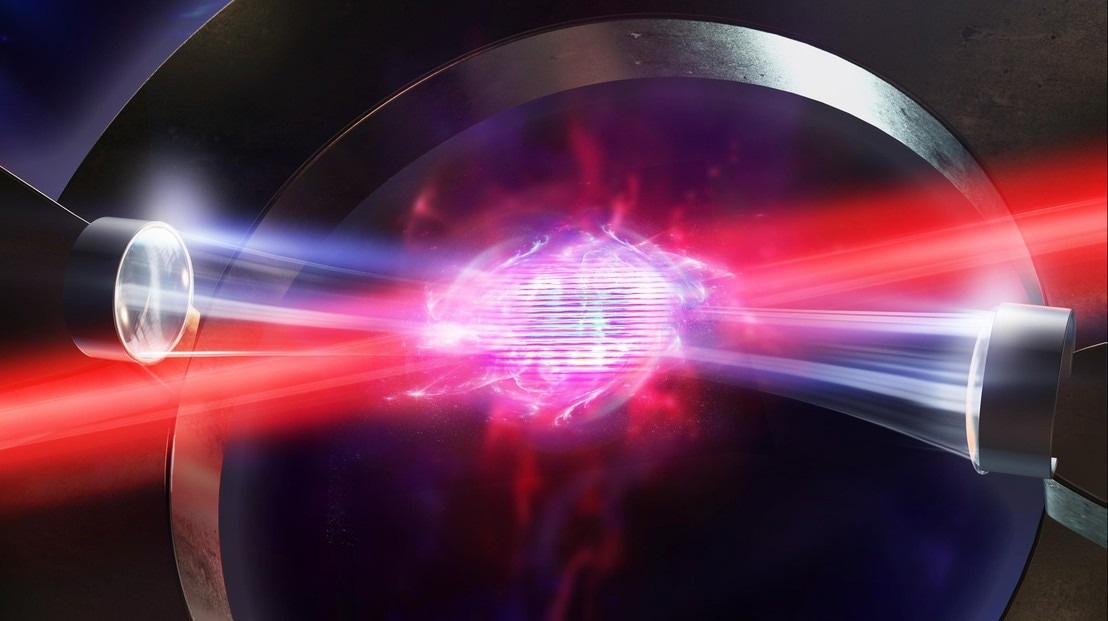At École Polytechnique Fédérale de Lausanne (EPFL), Researchers have discovered a new approach to creating a crystalline structure known as a “density wave” in an atomic gas.

An illustration of a density wave. Image Credit: Harald Ritsch. Copyright: Innsbruck University and EPFL
The study outcomes could help one better understand the behavior of quantum matter, one of the most complicated issues in physics.
Cold atomic gases were well known in the past for the ability to ‘program’ the interactions between atoms. Our experiment doubles this ability!
Jean-Philippe Brantut, Professor, École polytechnique fédérale de Lausanne
Collaborating with the group of Professor Helmut Ritsch at the University of Innsbruck, they have made a discovery that has the potential to affect not only quantum research but also quantum-based technologies in the future.
Density Waves
For a long time, researchers have been interested in comprehending how materials self-arrange into complicated structures, like crystals.
In the often-arcane world of quantum physics, this type of self-organization of particles is noted in “density waves,” where particles set themselves up into a normal and repeating pattern or “order;” like a group of people with different colored shirts standing in a line but in a pattern where no two people with similar color shirt stand next to each other.
Density waves are noted in a range of materials, such as insulators, metals, and superconductors. But studying them has been hard, particularly when this order (the patterns of particles in the wave) takes place with other kinds of organization such as superfluidity—a property that enables particles to flow in the absence of resistance.
It is worth noting that superfluidity is not just a theoretical curiosity; it is of huge interest for developing materials with special properties, like high-temperature superconductivity, which could result in highly efficient energy transfer and storage or for building quantum computers.
Tuning a Fermi Gas With Light
For this interplay to be explored, the researchers, Brantut and his collaborators, made a “unitary Fermi gas,” a thin gas of lithium atoms that have been cooled to extremely low temperatures and where atoms collide with each other very frequently.
Further, the scientists positioned this gas in an optical cavity, a device utilized to confine light in a small space for a prolonged period. Optical cavities are created of two-facing mirrors that reflect incoming light back and forth between them thousands of times, thereby enabling light particles and photons to build up within the cavity.
In the study, the scientists utilized the cavity to cause the particles in the Fermi gas to cooperate at a long distance: a first atom would liberate a photon that bounces onto the mirrors, which is further reabsorbed by the second atom of the gas.
This is irrespective of how far it is from the first. When sufficient photons are released and reabsorbed—easily tuned in the experiment—the atoms are jointly set up into a density wave pattern.
The combination of atoms colliding directly with each other in the Fermi gas, while simultaneously exchanging photons over long distance, is a new type of matter where the interactions are extreme. We hope what we will see there will improve our understanding of some of the most complex materials encountered in physics.
Jean-Philippe Brantut, Professor, École polytechnique fédérale de Lausanne
Journal Reference
Helson, V., et al. (2023) Density-wave ordering in a unitary Fermi gas with photon-mediated interactions. Nature. doi.org/10.1038/s41586-023-06018-3.